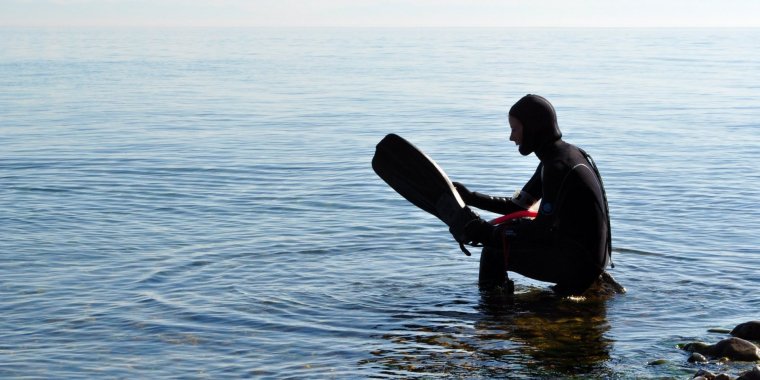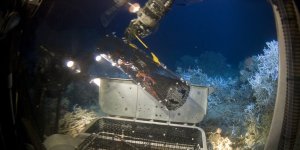| News / Science News |
Ancient lakes: eyes into the past, and the future
Modern, human-caused changes are accelerating threats to ancient lakes, these unique ecosystems.

As part of the ancient lakes research, scientist Stephanie Hampton prepares to explore Lake Baikal. Credit: Washington State University
Ancient lakes are waterbodies more than 130,000 years old. Over their long histories, they've seen countless changes -- warming and cooling cycles, wet and dry periods, altered biology and chemistry.
These age-old lakes have long tolerated the presence of humans, supporting some of the earliest known settlements and playing key roles in our cultural evolution and development, state Stephanie Hampton, a limnologist (lake scientist) at Washington State University.
Despite covering less than one percent of Earth's surface area, ancient lakes contain almost half the world's fresh surface water and a large share of its freshwater biodiversity.
The lakes also support major economies, including fisheries and tourism. But it's these very uses that are degrading the ecological, socioeconomic and scientific value of many ancient lakes.
The researchers peered into the waters of 29 ancient lakes around the world. The lakes are dotted across almost every continent, and located in areas with a range of land uses and socioeconomic conditions.
Some cross political boundaries, such as the Caspian Sea, which is shared by Russia, Kazakhstan, Turkmenistan, Iran and Azerbaijan. Others, such as Lake Baikal in Russia, are UNESCO World Heritage Sites. Still others - California's Lake Tahoe, for example - support thriving tourism industries.
Ancient lakes are threatened by invasive species, warming waters and a host of other maladies. Among the most pervasive is pollution by nutrients, usually nitrogen or phosphorus from fertilizers.
Freshwater lakes range from oligotrophic, with see-to-the-bottom clear waters and low nutrient levels, to eutrophic, with an overgrowth of algae fueled by an excess of nutrients. Runoff from the land carries nutrients into rivers and streams and eventually into larger waterbodies.
Continued eutrophication essentially kills a lake, with an overgrowth of algae starving its waters of oxygen and leaving fish and other freshwater species unable to breathe. Harmful algae blooms and resulting dead zones signal that a lake is in trouble.
Unfortunately, increasing nutrient concentrations and the consequences of eutrophication have been recorded for most of the ancient lakes, including Victoria [on the border of Kenya, Tanzania and Uganda], Baikal [Russia], Valencia [Venezuela], Titicaca [Peru] and Ohrid [Macedonia].
A major effect of eutrophication, is a loss of biodiversity. In Lake Victoria, for example, decreased water clarity has affected the reproduction of endemic cichlid fish, leading to the disappearance of dozens of species.
In Lake Baikal, algae blooms threaten what scientists call an extraordinary biodiversity of the nearshore benthos, or bottom zone. In Lake Tahoe, impaired water clarity has precipitated declines in populations of deep-water invertebrates and other species.
These lakes not only record long histories of environmental variation and human resource use, they also harbor high rates of endemism and biodiversity. Many of the biota in ancient lakes may be especially sensitive to threats and may be less likely to recover following collapses of their populations. (National Science Foundation)
YOU MAY ALSO LIKE




